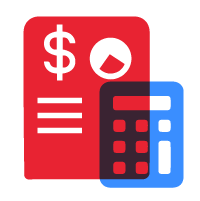When launching a startup, you’re driven by a vision—maybe to solve a problem, bring innovation to life, or fill a gap in the market. But beyond passion and ideas lies the unglamorous, often nerve-wracking world of numbers. This is where financial forecasting steps in.
Financial forecasting isn’t just about numbers on a spreadsheet—it’s about making informed decisions, planning growth, attracting investors, and ensuring your startup survives and thrives. In this in-depth guide, we’ll explore everything startups need to know about financial forecasting, why it’s important, how to do it right, and how to avoid common pitfalls.

What is Financial Forecasting?
Before diving into the process, it’s important to understand what financial forecasting really is and why it matters in the entrepreneurial landscape.
Financial forecasting is the process of estimating your startup’s future financial performance based on historical data, market research, industry trends, and strategic goals. It involves predicting revenue, expenses, cash flow, and capital needs over a specific period—typically monthly, quarterly, or annually.
For startups, forecasting is more complex because there’s often limited historical data. Still, it’s absolutely essential for managing your burn rate, determining your break-even point, and setting realistic growth expectations.
Why Financial Forecasting for Startups Important?
Financial forecasting isn’t just a task to check off your to-do list. It plays a central role in building and running a successful startup. Here’s why it matters:
Guides Strategic Decision-Making
When you know what your financial future looks like, you’re better equipped to make critical decisions. Should you scale operations? Hire more staff? Increase your marketing spend? Analyzing market trends is essential for making informed strategic decisions and accurate financial forecasts. A detailed forecast gives you clarity on what you can afford and where to allocate resources.
Attracts Investors and Lenders
Investors and lenders don’t back ideas; they back viable businesses. Clear financial information is crucial for building investor and lender confidence. A robust financial forecast shows potential funders that you’ve thought through your business model and understand the financial mechanics that will drive your growth.
Monitors Performance and KPIs
Forecasting sets benchmarks and helps establish key performance indicators (KPIs), which are essential metrics for tracking business success and informing decision-making. By comparing actual results to your forecast, you can see how well your startup is performing. Are you hitting your targets? Are your assumptions holding true? This feedback loop helps you make timely adjustments.
Manages Cash Flow
Startups often fail not because they lack profits, but because they run out of cash. A forecast helps you identify cash shortages before they happen so you can plan accordingly—by cutting costs, securing financing, or delaying expenses. Knowing how much cash is available at any given time is crucial for ensuring your business remains financially viable.
Supports Fundraising Efforts
When you’re raising capital, financial forecasts help demonstrate your startup’s growth potential. They show how new capital will be used and what return investors might expect, making your pitch more compelling and data-driven. Forecasts also help illustrate potential financial outcomes under different scenarios, which is valuable for investors.
Key Components of a Startup Financial Forecast
Creating a comprehensive financial forecast means considering multiple interconnected parts of your business. Analyzing cost structures is essential to build an accurate and comprehensive financial forecast, as it helps in forecasting future financial performance and evaluating key business metrics.
Below are the primary components every startup forecast should include:
Revenue Forecast
Your revenue forecast estimates how much money your startup will generate over time. Forecast sales and sales projections are essential for predicting your business’s future income, helping you plan for growth and make informed financial decisions. Startups usually rely on:
- Sales volume projections: Estimating how many products or services you expect to sell.
- Pricing model: Will you charge per unit or subscription or use a freemium model?
- Sales channels: Different revenue streams might include e-commerce, partnerships, or in-person sales.
- Customer acquisition plans: Growth rate in user base, marketing spend, and expected conversion rates.
- Monthly sales tracking: Monitoring monthly sales helps create accurate sales forecasts and informs your profit and loss statements.
Using a sales forecast and sales forecasts allows you to set realistic targets and inform your strategic planning.
Both top-down (market size and potential share) and bottom-up (conversion rates, pricing, customer numbers) approaches can be used to forecast revenue. Projected revenue, future revenue, and future sales are estimated by analyzing detailed business data and market trends with these methods.
Monitoring revenue growth is crucial, as it serves as a key indicator of your business’s performance and long-term potential.
Cost of Goods Sold (COGS)
COGS refers to the direct costs associated with producing your goods or delivering services. These could include:
- Raw materials
- Manufacturing and packaging
- Labor directly tied to production
Within COGS, it is important to distinguish between fixed and variable costs. Fixed costs remain constant regardless of production levels, while variable costs fluctuate depending on the volume of goods produced or services delivered.
Understanding COGS is essential because subtracting it from revenue gives you your gross profit—a critical profitability measure.
Accurately identifying variable costs within COGS is crucial for effective expense forecasting and making informed budgeting decisions.
Operating Expenses
Operating expenses are the costs of running your startup, separate from the direct costs of production. Common categories include:
- Salaries and benefits for employees
- Office rent and utilities
- Marketing and advertising
- Marketing expenses
- Insurance and professional fees
- Software and subscriptions
Startup expenses are the initial costs required to launch your business, while ongoing operating costs and operational costs are the recurring expenses needed to keep your business running.
Forecasting these accurately is crucial, especially in the early stages when you’re keeping a close eye on your burn rate. Creating detailed expense forecasts for your operational costs and operating costs is essential for effective budgeting and financial planning.
Cash Flow Projections
Cash flow forecasts show when money enters and exits your business. This is especially important for startups with irregular income or upfront capital needs. A cash flow projection plays a crucial role in predicting future cash inflows and outflows, helping you avoid liquidity issues and make informed business decisions.
Key elements include:
- Timing of customer payments
- Vendor payment schedules
- Loan repayments and interest
- Capital investments
- Reserve requirements
- Preparing cash flow statements to track liquidity
Positive cash flow doesn’t always correlate with profitability. A forecast helps ensure you have the liquidity to operate day to day.
Related Article:
Cash Flow Forecasting: Your Ultimate Guide to Predict, Plan, and Prosper Your Financial Health
Master cash flow forecasting to avoid shortfalls, improve decision-making, and fuel business growth. Learn methods, tools, and expert tips in this guide.
Profit and Loss Statement (P&L)
Also known as the income statement, the P&L brings together revenue, COGS, and expenses to determine net profit or loss.
It typically includes:
- Total revenues
- Gross profit
- Total operating expenses
- Net income (or loss)
This gives stakeholders a clear view of your financial health over a specific period.
Balance Sheet Forecast
The balance sheet, a key component in financial forecasting for startups, presents a snapshot of your startup’s financial position at a given time. Balance sheets are essential for building comprehensive financial projections, as they work alongside cash flow statements and income statements to assess a company’s financial health and future outlook. Forecasting your balance sheet involves:
- Projecting assets (e.g., cash, equipment, inventory)
- Projecting liabilities (e.g., loans, accounts payable)
- Estimating equity (e.g., retained earnings, founder investment)
A strong balance sheet demonstrates stability and potential for growth.
How to Create a Financial Forecast for Your Startup
Now that you understand the components, here’s how to bring them together into a working forecast for your startup. Using a financial model or multiple financial models is essential to create financial projections that help you plan for different scenarios and test your assumptions. A financial model template can simplify the process by providing a structured format for your calculations and forecasts.
Accurate financial projections are crucial for startup success, as they help you anticipate challenges and make informed decisions.
Step 1: Define Your Goals and Timeframe
Are you creating this forecast to attract investment? Manage operations? Plan a product launch? Start by clarifying your objective. Then, choose your time horizon: 12-month forecasts are good for tactical planning; 3-5 year forecasts are better for strategic vision.
Step 2: Choose the Right Forecasting Method
- Top-down: Estimate market size, then project your share. Useful for demonstrating potential but often overly optimistic, as it can be heavily influenced by external factors such as market trends or sudden shifts in demand.
- Bottom-up: Start with known metrics (like traffic and conversion rates) and build up. More accurate for early-stage startups, since it relies less on external factors, though rapid growth drivers like virality or word of mouth can be challenging to incorporate.
Many founders blend both methods for a balanced approach.
Step 3: Gather Data and Make Assumptions
Use whatever data you can get your hands on:
- Industry reports
- Customer surveys
- Pilot programs
- Benchmarking tools (like CB Insights, Crunchbase, and Statista)
Document your assumptions clearly: customer growth, pricing models, churn rate, sales cycle length, etc.
Step 4: Build Your Forecast Model
Use tools like Excel, Google Sheets, or financial planning platforms (e.g., LivePlan, Finmark).
Structure your model to include:
- Monthly revenue projections
- Itemized expenses
- Cash flow forecasts
- P&L and balance sheet summaries
Include formulas and linkages to ensure automatic updates when variables change.
Step 5: Monitor, Compare, and Adjust
Financial forecasting for startups is not a one-time task. Review actual performance monthly and update your forecasts accordingly. Look for trends, variances, and anomalies that could indicate a need for course correction.
Best Practices for Financial Forecasting in Startups
To get the most out of your forecasts, follow these tried-and-tested strategies:
1. Start with conservative estimates.
Overpromising is a common pitfall. Investors prefer realistic, well-grounded forecasts over flashy projections that collapse under scrutiny.
2. Include different scenarios.
Scenario planning adds depth. Build:
- Base case: Most likely outcomes
- Best case: Optimistic but achievable
- Worst case: Conservative with risks materialized
This shows preparedness for uncertainty.
3. Account for seasonal or market variability.
If your business is affected by seasonality (e.g., holidays, school year, economic cycles), reflect this in your forecasts.
4. Break down customer acquisition costs.
Track customer acquisition cost (CAC) and lifetime value (LTV). These metrics reveal how scalable and profitable your growth is.
5. Update regularly.
Set a monthly or quarterly schedule to review and revise your forecast. As your business evolves, so should your numbers.
6. Consult a financial expert.
If you’re not confident with financial modeling, hire or consult financial professionals such as an accountant or CFO. Their expertise can provide structure and credibility.
Related Article:
Tips for Effective Bookkeeping for Startups That Streamline Success
Explore essential tips for effective bookkeeping for startups. Learn how to save time, reduce costs, and streamline financial processes to fuel business growth.
Common Mistakes Startups Make in Financial Forecasting
Avoid these common pitfalls that can compromise the integrity of your financial forecasts:
Being Overly Optimistic
Assuming explosive growth without data to back it up can make your forecast unreliable and raise red flags with investors.
Ignoring Cash Flow
Many startups track revenue and profit but neglect cash flow. This oversight can lead to liquidity crises, even in profitable companies.
Underestimating Expenses
Hidden costs, from software licenses to legal fees, can derail budgets. Be thorough in itemizing and projecting expenses.
Failing to Monitor and Adjust
Forecasts are living documents. Ignoring regular updates can render them useless in a fast-changing startup environment.
Not Tailoring Forecasts to Your Audience
When pitching to investors, focus on the metrics that matter to them—growth rate, gross margin, runway, and ROI potential.
Forecasting During Uncertainty or Rapid Change
Startups often operate in dynamic and uncertain environments. Here’s how to build resilience into your forecasting process:
- Use rolling forecasts: Update regularly rather than locking into annual plans.
- Monitor cash runway: Know how long your startup can survive at your current burn rate.
- Prepare contingency plans: Model for delayed funding, slower growth, or market shifts.
- Maintain cost flexibility: Keep fixed costs low and favor scalable, variable expense structures.
Financial Forecasting and Fundraising
When seeking investment, your financial forecast becomes a storytelling tool. It should complement your pitch deck and business plan. A clear marketing strategy and effective marketing strategies can demonstrate to investors how you plan to reach your target audience and drive growth, making your fundraising efforts more compelling.
Understanding different methods of investing money in a startup, such as financing through debt or equity, is crucial for entrepreneurs to secure the right type of external funding to support business growth.
What Investors Look For:
- Clear path to profitability
- Strong grasp of unit economics (CAC, LTV)
- Transparent, data-backed assumptions
- Logical use of funds and projected ROI
- Sensitivity to risks and mitigation plans
Walk investors through your forecast—don’t just hand over spreadsheets. Show them the reasoning behind your projections.
Tools and Templates for Startup Financial Forecasting
You don’t have to start from scratch. Here are some helpful tools:
- LivePlan—For business plans and projections.
- Causal – Visual, collaborative forecasting.
- Finmark – Startup-focused financial modeling.
- Fathom – For financial analysis and KPIs.
- Google Sheets/Excel—Flexible and customizable for detailed modeling.
Many tools offer templates specifically designed for SaaS, e-commerce, or service-based startups.
Need Expert Help with Your Financial Forecasting?
Don’t let financial forecasting overwhelm you—outsource it to the pros! Our team of experienced financial experts specializes in creating accurate, actionable startup financial projections tailored to your unique business. We handle everything from cash flow management to detailed expense projections, freeing you to focus on growing your startup. Get in touch today to see how we can help you build a robust financial forecast that attracts potential investors and drives strategic planning.
Frequently Asked Questions
How far ahead should a startup forecast its finances?
Most startups should maintain a 12-month operational forecast for internal decision-making and a 3- to 5-year strategic forecast for investors and long-term planning. The time horizon depends on your growth stage and funding goals. Early-stage startups can focus on shorter terms and gradually extend their forecasting as they gather more data.
Do I need a professional accountant or CFO to create a financial forecast?
Not necessarily. Many startup founders build their initial forecasts using spreadsheet templates or online tools. However, as your business becomes more complex or prepares for funding rounds, hiring a fractional CFO or financial consultant can ensure accuracy, credibility, and investor readiness.
How does financial forecasting differ from budgeting?
While both are financial planning tools, forecasting estimates future performance based on assumptions and trends, while budgeting sets spending limits and targets for a specific period. Forecasts are more flexible and predictive, whereas budgets are often more fixed and goal-oriented.
What’s the best financial forecasting method for SaaS startups?
For SaaS startups, a bottom-up forecasting model is typically more accurate. It should include metrics like Monthly Recurring Revenue (MRR), churn rate, Customer Acquisition Cost (CAC), and Customer Lifetime Value (LTV). This approach helps forecast growth based on actual subscription metrics and user behavior.
Can a startup use forecasting to determine how much funding to raise?
Absolutely. By forecasting expenses, revenue, and cash flow, you can calculate your burn rate and determine your cash runway. This allows you to estimate how much capital you need to raise to reach key milestones—such as product development, customer acquisition, or profitability.







